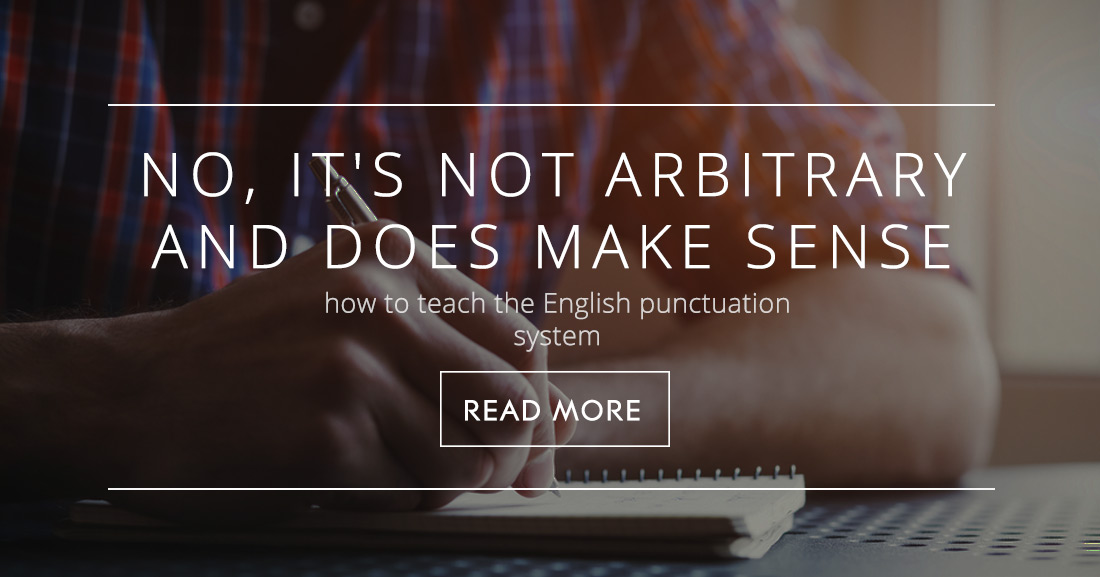No, It's Not Arbitrary and Does Make Sense: How to Teach the English Punctuation System


Are they frustrated (or are you) that such little symbols can cause so much trouble? Punctuation doesn’t have to get you down. Here is a simple breakdown of the most common punctuation symbols in English and how to use them. It’s a great reference for your students or you can use it to plan a simple but thorough review.

The period in English is used at the end of a sentence that is not a question. A period comes directly after the last letter of the last word in the sentence and should be followed by one space before starting the next word of the next sentence. (The one space rule applies when students are using a computer. If by some chance they are on a typewriter, they should include two spaces after a period.)
A period can also appear inside a quotation mark if it follows the final word of the sentence. It cannot appear inside quotation marks when the sentence continues after them.
The question mark in English comes at the end of a direct question. Question marks do not come at the end of an indirect question (those that are embedded in a dependent clause) unless the main clause is also a question.
Question marks are also used after a tag question. A tag question is a short phrase that comes at the end of a statement asking the listener if the statement is true.
Polite requests, though technically questions, frequently do not end with a question mark even though that would be grammatically correct.
Question marks should not be combined with other punctuation marks at the end of a sentence though you will sometimes see this in casual writing.
Question marks can also appear inside a direct quotation even if the sentence continues after the quotes.
The exclamation point in English is used at the end of a strong declaration, an interjection, or a strong command.
The exclamation point is rarely used in academic and formal writing. It can, however, appear inside a direct quotation when the sentence continues after the quotation mark.
The colon has two basic uses in English. Most commonly, writers use it to introduce a list of items in a sentence.
It can also be used to introduce an explanation that comes after an independent clause. It is generally understood that the information that follows the colon is defining the thing that comes before the colon.
Most ESL students will only use a colon to introduce lists in writing.
The semi-colon is a frequently misused punctuation symbol among English students. Most students will only need to use the semi-colon in two different situations. The first is when linking two independent clauses which are closely related. The clauses can usually be linked by a coordinating conjunction or subordinating conjunction, but using the semi-colon instead implies the relationship rather than stating it directly.
The other situation in which some ESL students will find themselves using a semicolon is for separating items in a complicated list – a list where the individual items in the list require the use of a comma, such as city state combinations or names followed by titles.
The comma is perhaps the most confusion piece of punctuation in the English language and probably deserves a post entirely to itself. Even native speakers struggle with using commas correctly in their writing. Here are some basic rules your ESL students should know about comma use.
Your students and you should not be discouraged if you struggle with punctuation in English. Though it can be complicated, hopefully this guide will serve as a reference for the simple rules governing these little symbols in English.